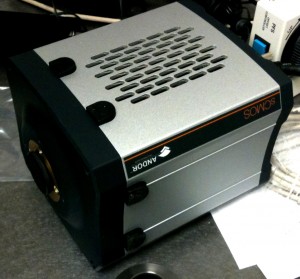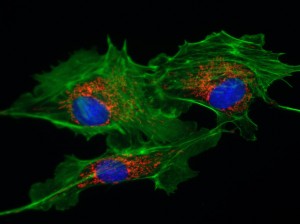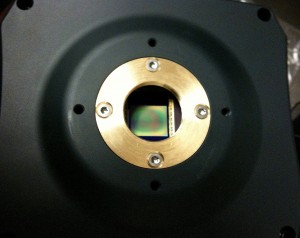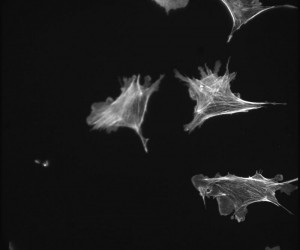Last week I had an opportunity to do a direct comparison of a Neo against a “competitive brand” IXC-285 based camera. Here are some of the results:

Installation of the camera:
It’s important to note that the high speed data transfer card used by this camera requires an PCI Express x16 Slot. This slot is normally used by high end video cards, which may cause a problem for some computers. The simple short term answer right now is to use a computer which has a video card processor and memory built in, leaving the x16 slot available. You can also get systems which provide multiple x16 slots, which enables the use of a high end video card and the data transfer card.
Software install was surprisingly easy. Loaded up Solis and followed Andor’s directions on setting up the data card, and that was it!
How it works
One neat thing about the camera is that it basically works like any other camera, but with a much faster readout and a much larger field of view than is usually experienced. There is some delay when sending start/stop/acquire operations to the camera, which will need to be overcome for this to enter the normal-user market. I had about 45 minutes to play with it, and as expected the first major difference seen was the massive advantage in the field of view. Here is an example: This is the usual comparison of FOV, showing the major improvement in acquisition area using a camera of this type.
Note these images are down-processed for easy reading online, and the native resolution of the two cameras is almost identical (6.45um @ 285 vs. 6.5um @ Neo)


Here is an image I shot of the chip coverage inside the C-Mount. If you have a 285 camera you’ll note how much larger this chip is than typical CCD’s.

Noise Performance
The second advantage of cmos architecture is the ability to sample the image very slowly upon readout. This capability yields a very low read noise. Now the QE of the camera when compared to a 285 chip is a bit lower, but this lower noise really shows the performance difference in a direct comparison. In the images below I acquired the 285 images first, and used high gain, slow readout, and a 3ms exposure time. Both images were acquired using a FITC type filter cube.

S/n for 285 = 1.646 (298/181)
S/n for Neo = 9.32 (821/88)
My Conclusions
The raw design of this camera has amazing potential. This system will destroy all competitors in slide/multi-well scanning applications. The downsides right now are all related to the useage of the data input board and lack of mass-market “easyness”. Once there are drivers in Elements, Metamorph etc. and the hardware issues are solved via a reliable how-to on PC specs, I believe this product and others like it will usher in an era where the cmos sensor is the go-to product for microscopy. My bet is 3-5 years. Note that these cameras do not outperform EMCCD cameras, where horsepower in the way of raw QE and massive amplification capability can easily beat these sensors on sensitivity. So there is much life left in the good old freame transfer sensor…until someone cooks up a back thinned Scmos that is…
– Austin

Comments
3 responses to “Andor Neo sCmos Review”
Thanks for this, Austin! I think we might get to demo one of these soon. I hope it will be a good replacement for an interline CCD for our new live-cell TIRF setup.
Hi Sam,
I think a lot of people are kind of standing by until the drivers come out. Later on this week, time allowing, I want to get into the concept of disruptive technology and how it plays a major role in our world of imaging. This camera fits the concept of a disruptive product like a glove. In fact there are all sorts of small problems, created by this technology, that will drive changes to the microscopes themselves! One major point is that the user now actually sees the entire field of view as he or she would under the oculars. The day may be coming where oculars are simply not needed, however as a purist I still find the view through the scope to be the most “real”. A perfect example of a problem here is that the images I posted are obviously not flat in the scmos. Reason being is this is a heavily used scope without an aligned stage insert. You can’t really see this on the 285 chip because of the small FOV, whereas with the scmos it’s ridiculously obvious! These chips are going to drive objective manufacturers towards better field flatness in lenses, better transmission balance, all of it. It’ll be interesting to see how much optical design changes to suit this product. Will the *gasp* venerable C-Mount be eclipsed as the standard coupler? Crazy stuff!
[…] Neo camera has been out for about 8 months now. I first wrote about using it back in February last year. The camera showed the major difference in field of view between sCmos sensors quite well, but the […]